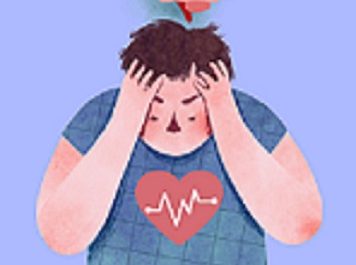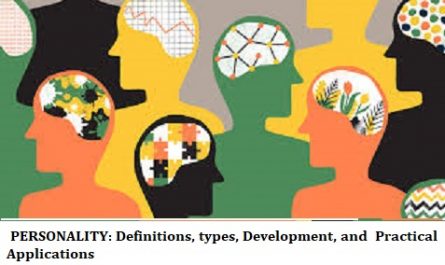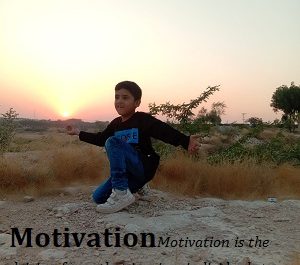Passive aggression refers to a pattern of behavior where an individual indirectly expresses their hostility, frustration, or resentment towards others, often through subtle or covert means. It involves a passive and covert form of resistance or opposition, rather than direct confrontation or assertiveness. Passive aggression may be characterized by actions such as avoiding responsibility, procrastinating, sullenness, sarcasm, backhanded compliments, deliberate inefficiency, sulking, withholding information, or subtle sabotage. It can manifest in various settings, including personal relationships, workplaces, social situations, and other interpersonal dynamics. Passive aggressive behavior is often considered unhealthy and can negatively impact relationships and communication. It is important to address passive-aggressive behavior through effective communication and conflict-resolution strategies to promote healthy and constructive interactions with others.
Signs of Passive-Aggressive Behavior
Passive-aggressive behavior can manifest in various ways, making it difficult to recognize. Some common signs of passive-aggressive behavior include:
- Procrastination – Putting off tasks or responsibilities as a way of expressing frustration or resistance.
- Sarcasm – Using sarcastic or mocking remarks to indirectly express anger or irritation.
- Silent treatment – Refusing to communicate or ignoring others as a way of expressing displeasure or frustration.
- Indirect complaints – Complaining or expressing dissatisfaction indirectly, such as through subtle hints or complaints to third parties, instead of addressing the issue directly with the person involved.
- Sabotage – Deliberately undermining or sabotaging the efforts of others as a way of expressing hostility or frustration.
- Backhanded compliments – Giving compliments that are disguised as insults, often with an underlying negative tone or intention.
- Avoidance – Avoiding or withdrawing from situations or interactions that trigger discomfort or conflict, rather than addressing the issue directly.
Causes of Passive-Aggressive Behavior
Passive-aggressive behavior can have various underlying causes, including:
- Unresolved conflict – Passive-aggressive behavior can be a way of expressing unresolved anger or frustration towards someone who has caused us harm or who we have an issue with.
- Fear of confrontation – Some people may resort to passive-aggressive behavior as a way to avoid confrontation or uncomfortable situations.
- Low self-esteem – People with low self-esteem may struggle with expressing their feelings or asserting themselves, leading them to exhibit passive-aggressive behavior instead.
- Childhood trauma – Experiences of childhood trauma, such as abuse or neglect, can impact a person’s ability to communicate and express emotions directly.
- Cultural or family norms – Some cultures or families may have norms or expectations around avoiding direct confrontation or expressing emotions openly, leading to the development of passive-aggressive behavior.
Effects of Passive-Aggressive Behavior on Relationships
Passive-aggressive behavior can have significant negative impacts on relationships, including:
Breakdown in communication – Passive-aggressive behavior can lead to a breakdown in communication, making it difficult to resolve issues or come to a resolution.
Misunderstandings – Passive-aggressive behavior can be confusing and often misunderstood, leading to further frustration and tension in relationships.
Lack of trust – Repeated instances of passive-aggressive behavior can erode trust in relationships, making it difficult to build or maintain strong connections.
Emotional harm – Passive-aggressive behavior can cause emotional harm to others, leading to feelings of frustration, anger, or sadness.
Passive-Aggressive Behavior and mental health:
Here are some ways in which passive-aggressive behavior can be related to mental health:
Personality disorders: Certain personality disorders, such as passive-aggressive personality disorder, may involve passive-aggressive behavior as a key feature. Individuals with these disorders may struggle with expressing their emotions directly and may resort to passive-aggressive behavior as a way to cope with their difficulties.
Depression: Depression, a mood disorder characterized by persistent feelings of sadness, low self-esteem, and loss of interest or pleasure in activities, can manifest in passive-aggressive behavior. People with depression may struggle with expressing their emotions openly and directly, and may instead exhibit passive-aggressive behaviors as a way to cope with their negative emotions.
Anxiety: Anxiety disorders, which involve excessive worry or fear, can also contribute to passive-aggressive behavior. People with anxiety may feel anxious about confrontation or expressing their emotions directly, leading them to resort to passive-aggressive behaviors as a way to avoid conflict or manage their anxiety.
Childhood trauma: Experiences of childhood trauma, such as abuse or neglect, can impact a person’s ability to communicate and express emotions directly. Passive-aggressive behavior may develop as a coping mechanism in response to past trauma, where individuals may have learned to avoid direct confrontation as a way to protect themselves.
Poor emotion regulation: Difficulties in regulating and expressing emotions can also contribute to passive-aggressive behavior. If someone has not learned healthy ways to express their emotions, they may resort to passive-aggressive behavior as a way to indirectly communicate their feelings or frustrations.
It’s important to note that while mental health issues can influence passive-aggressive behavior, not everyone who exhibits passive-aggressive behavior has a mental health condition. Passive-aggressive behavior can also be learned from early childhood experiences or cultural norms. However, addressing underlying mental health concerns through therapy, counseling, or other appropriate interventions can often help in managing and reducing passive-aggressive behavior.
Managing Passive-Aggressive Behavior
Managing passive-aggressive behavior can be challenging, but here are some strategies that can help:
- Recognize and identify passive-aggressive behavior: The first step in managing passive-aggressive behavior is to be able to recognize it. Pay attention to subtle signs such as sarcasm, avoidance, procrastination, and other covert expressions of frustration or resentment.
- Address the behavior directly: It’s important to confront the passive-aggressive behavior in a calm and assertive manner. Avoid aggression or hostility, but clearly express how the behavior is impacting you or others, and request a change in behavior. Be specific about the behavior that needs to change and the consequences of continued passive-aggressive behavior.
- Encourage open communication: Create an environment where open and honest communication is encouraged. Encourage the individual to express their thoughts and feelings directly instead of resorting to passive-aggressive behavior. Practice active listening and avoid being defensive.
- Set clear expectations and boundaries: Establish clear expectations and boundaries regarding behavior, responsibilities, and consequences. Clearly communicate what is expected and hold the individual accountable for their actions. Consistency in enforcing boundaries is key.
- Model assertive behavior: Lead by example and model assertive and direct communication. Avoid engaging in passive-aggressive behavior yourself, as this can perpetuate a cycle of unhealthy communication patterns.
- Offer support and resources: Passive-aggressive behavior may stem from underlying issues such as unexpressed emotions, low self-esteem, or poor coping skills. Offer support and resources, such as counseling or conflict resolution skills training, to help the individual address any underlying issues that may be contributing to their passive-aggressive behavior.
- Seek professional help if needed: If passive-aggressive behavior persists and significantly impacts your well-being or relationships, consider seeking professional help from a therapist or counselor. They can provide guidance and support in managing and addressing passive-aggressive behavior effectively.
Remember, managing passive-aggressive behavior requires patience, consistent effort, and effective communication skills. It’s important to address the behavior directly, set clear expectations, and encourage open and honest communication for healthy and constructive interactions with others.




